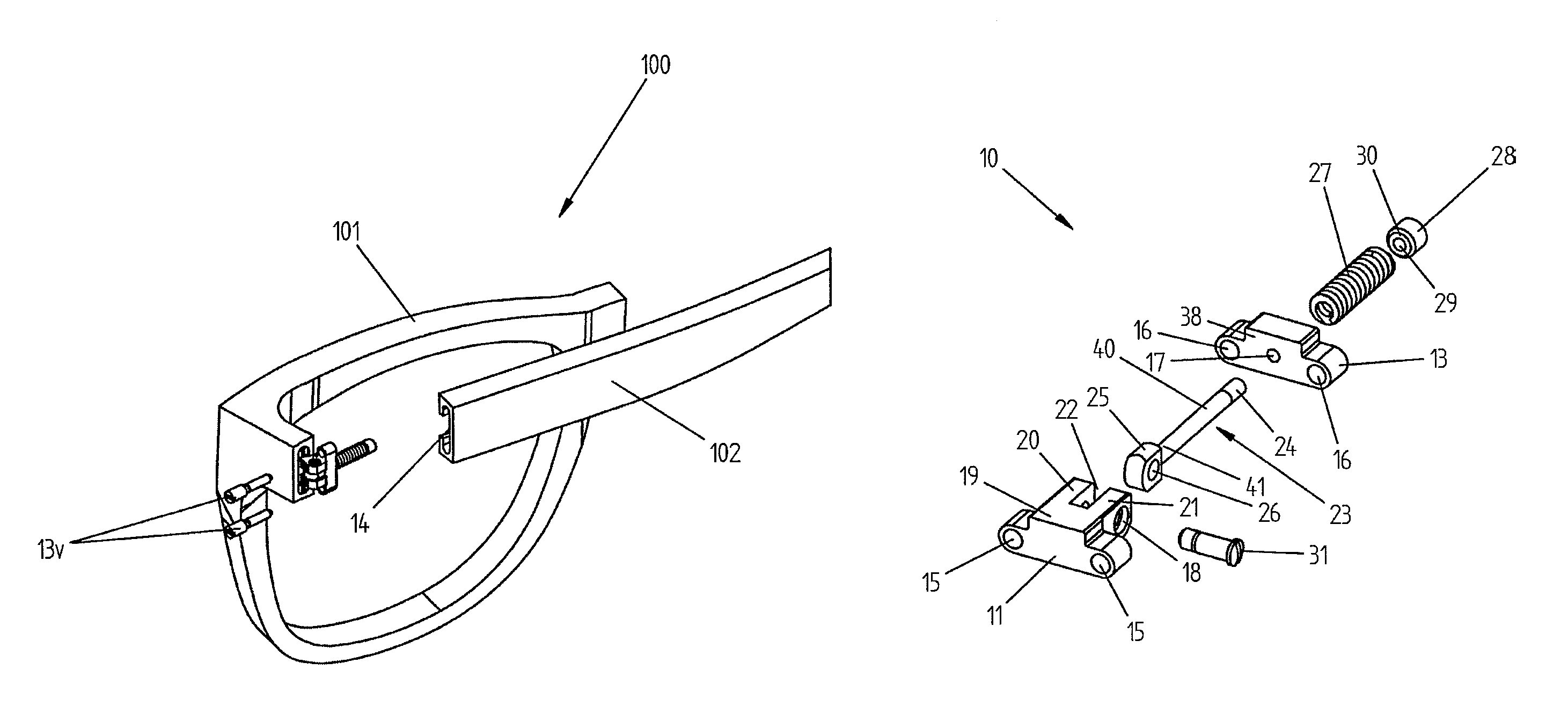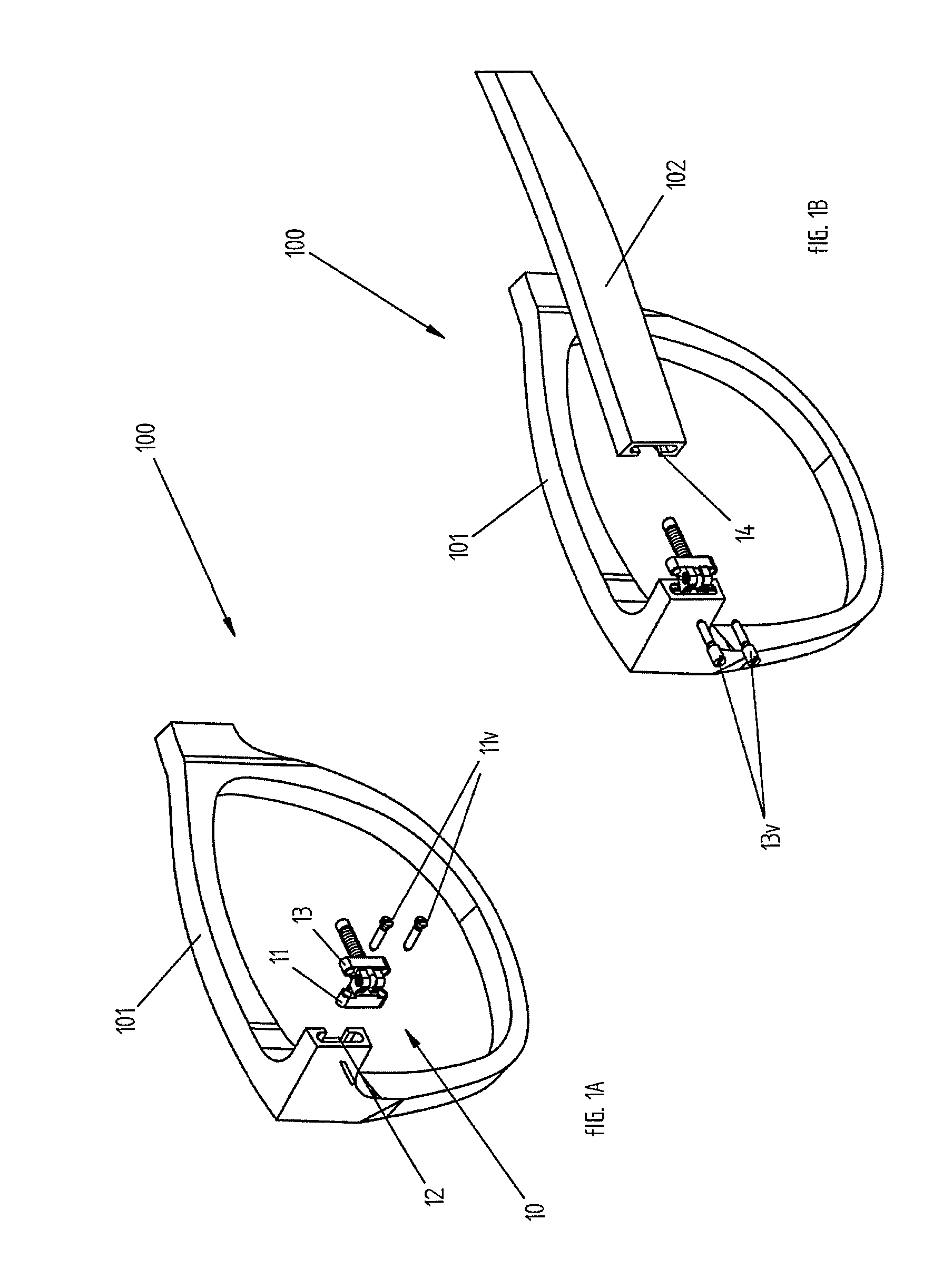Miniaturized elastic hinge, in particular for eyeglasses
a technology of elastic joints and hinges, applied in the field of joints, can solve the problems of insufficient mechanical reliability of said solutions, limited performance in terms of rotation capacity, amplitude of opening angle and elasticity, etc., and achieve the effects of convenient application, reduced size, and pleasant appearan
- Summary
- Abstract
- Description
- Claims
- Application Information
AI Technical Summary
Benefits of technology
Problems solved by technology
Method used
Image
Examples
Embodiment Construction
[0033]Figures from 1a to 1d show a pair of eyeglasses 100 and parts of the same. In particular, the eyeglasses 100 typically comprise a front portion 101 suited to rest on the user's nose and in front of his / her eyes during use of the eyeglasses 100, as well as a right and a left temple or side 102, suited to be positioned, always during use, respectively between the right and left pavilion of the ear and the head of the user. For the sake of clarity and simplicity, only the temple or side 102 is shown in Figures from 1a to 1d. The eyeglasses 100 are equipped with a hinge or joint 10 according to the present invention. Said hinge or joint 10 comprises in particular a first hinge element 11 and a second hinge element 13 that are rotatingly constrained to each other. While other details concerning the hinge or joint 10 will be illustrated further on in the description, at this point it can be noted in Figures from 1a to 1d that the first element 11 and the second element 13 are suited...
PUM
 Login to View More
Login to View More Abstract
Description
Claims
Application Information
 Login to View More
Login to View More - R&D
- Intellectual Property
- Life Sciences
- Materials
- Tech Scout
- Unparalleled Data Quality
- Higher Quality Content
- 60% Fewer Hallucinations
Browse by: Latest US Patents, China's latest patents, Technical Efficacy Thesaurus, Application Domain, Technology Topic, Popular Technical Reports.
© 2025 PatSnap. All rights reserved.Legal|Privacy policy|Modern Slavery Act Transparency Statement|Sitemap|About US| Contact US: help@patsnap.com



